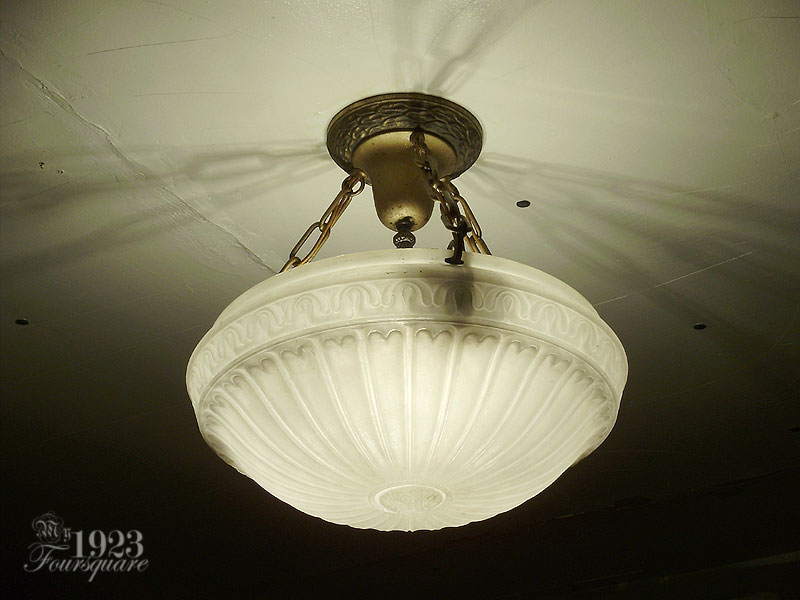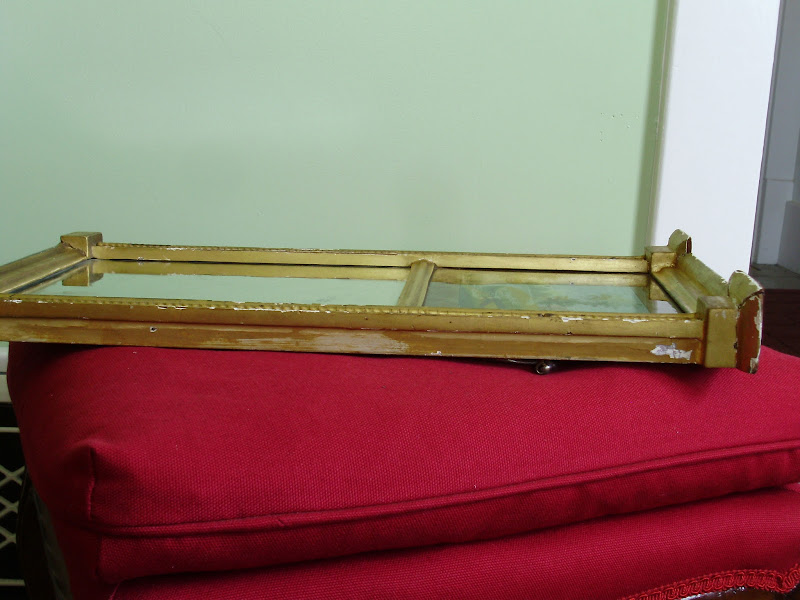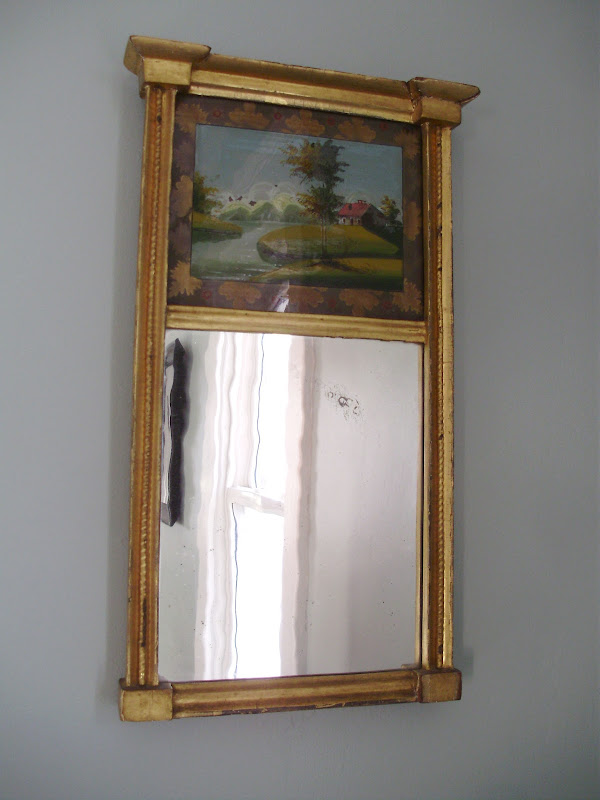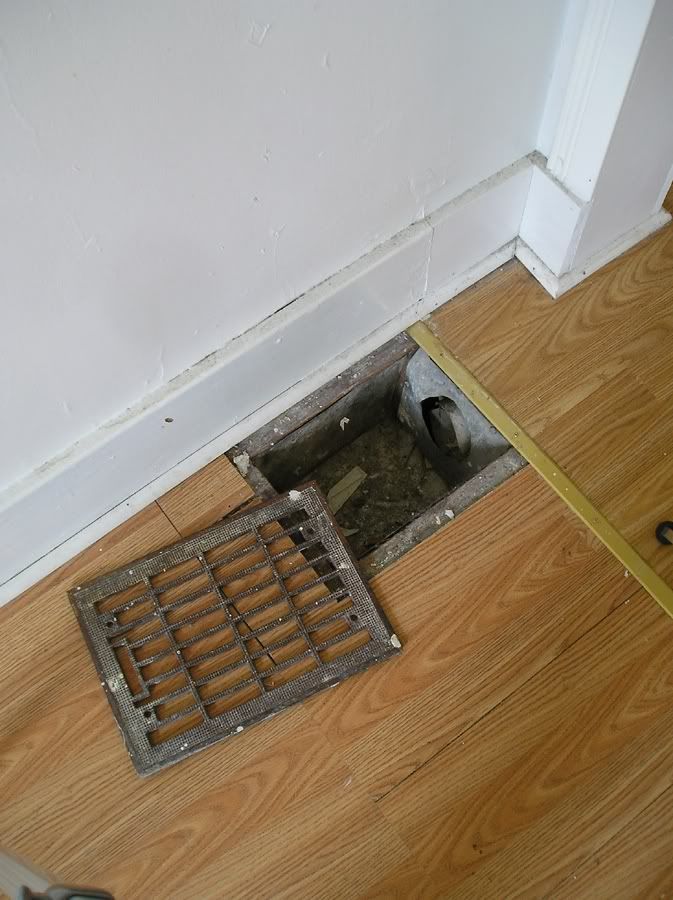There's no real way to create nice shots for this fixture, since the ceiling is unfinished (and reinforced with screws/washers to counteract the sagging, and the room is also filled with junk at the moment. These are the best I could do, and at least you can get an idea of how this looks.
This type of 1910-20s fixtures is called a "gravity" shade fixture, although that isn't necessarily the best term. The globe in held in place with special clips that clip (and screw-tighten) onto the rim of the glass shade, while also carrying the bulb socket and a chain link. These fixtures are more commonly found in dining rooms, living rooms, er even places like stores and banks (with very long links). They occasionally have only 1 bulb (sometimes hanging down in the centre, or a bulb each (like this one).



















